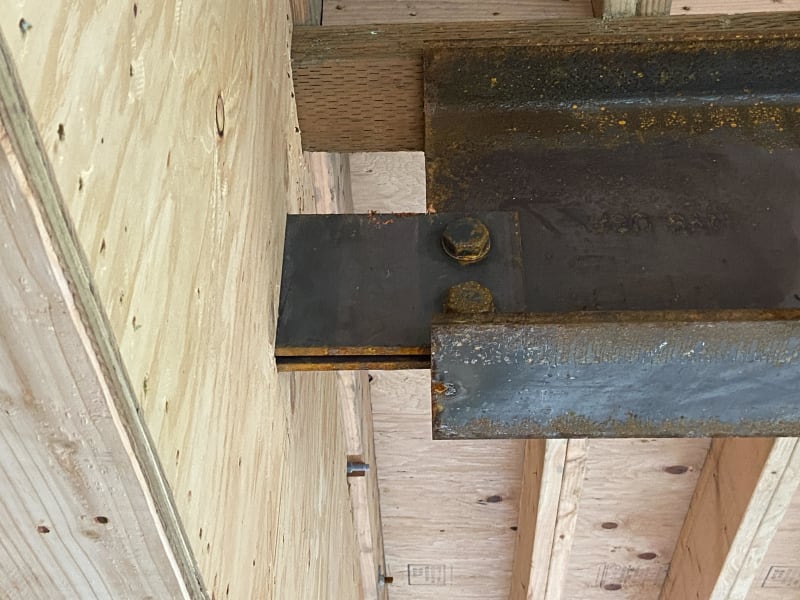BTRussell
Structural
- Feb 4, 2014
- 7
I have a project where a contractor did not install a beam and shear plate as noted in the plans. Instead of a shingle shear plate with three bolts attached near a support beam, the beam is supported by double shear plates with two bolts, and the beam is about 6" off of where the support beam is located.
I've run some calcs and I think that the bolts and plates work, just wondering if there is some maximum length for shear plates before some specific equation has to be checked. This is on a residential project and I designed it for full live loading and snow loading (200 psf) at the same time, but the deck is covered and I don't think that the beam will ever see the load it was designed for, let alone the LRFD factored load amounts. Plates are 7" deep & 7/16" thick, two 1" diameter bolts acting in double shear. Service level loading designed for about 1k D / 3k L / 12 k S at beam end.

I've run some calcs and I think that the bolts and plates work, just wondering if there is some maximum length for shear plates before some specific equation has to be checked. This is on a residential project and I designed it for full live loading and snow loading (200 psf) at the same time, but the deck is covered and I don't think that the beam will ever see the load it was designed for, let alone the LRFD factored load amounts. Plates are 7" deep & 7/16" thick, two 1" diameter bolts acting in double shear. Service level loading designed for about 1k D / 3k L / 12 k S at beam end.


![[ponder] [ponder] [ponder]](/data/assets/smilies/ponder.gif)





